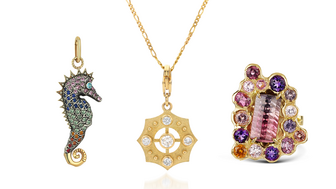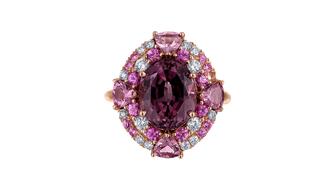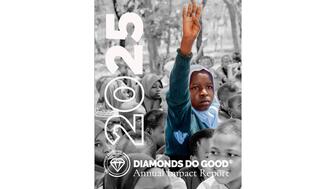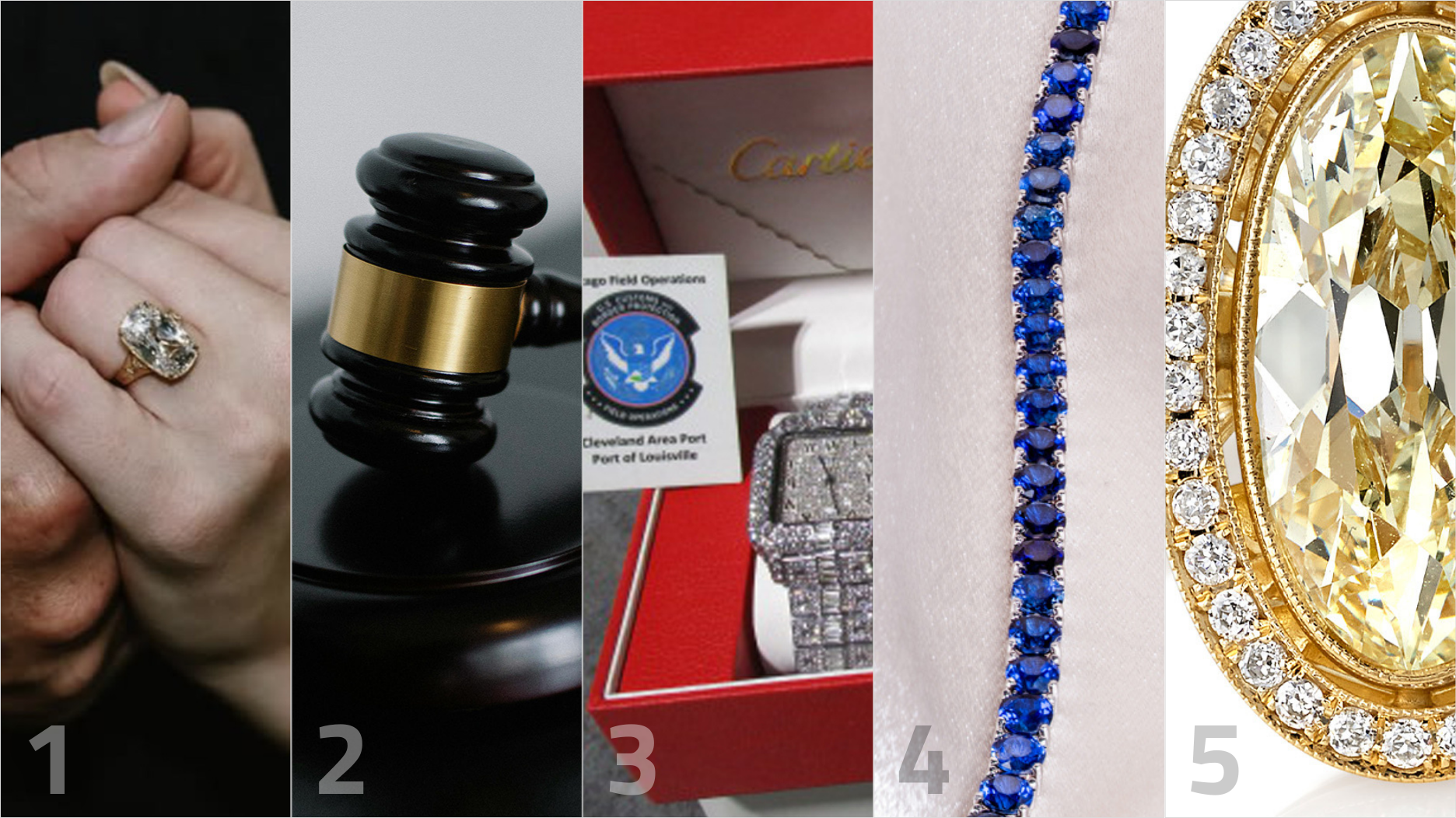Q&A: Al Cook on the Future of De Beers
The De Beers CEO discussed the Anglo American situation, natural diamond marketing, and why the future of lab-grown diamonds is technology.

A geologist by training, Cook joked during our interview that he’s spent his career working his way up the Mohs Hardness Scale to the “ultimate gem” at the end, the diamond.
My conversation with him took place May 31, in the afternoon following De Beers’ breakfast presentation breaking down its post-Anglo plans.
One of the highlights from the presentation, and the one that’s certainly made the most headlines so far, was the news that De Beers will no longer grow diamonds for jewelry at its Lightbox facility in Gresham, Oregon.
The sea change at Lightbox is just one arm of a multi-part strategy the company is undertaking to cut $100 million in costs a year, streamline its business, and safeguard demand for natural diamonds, all moves that would make it more attractive to potential investors.
Dubbed “Origins,” the strategy also includes:
— Focusing its resources and money on Africa by continuing to invest in the underground projects at Venetia in South Africa and Jwaneng in Botswana and in exploration in Angola;
— Pressing pause on the potential underground expansion at Gahcho Kué and exploration projects like Chidliak on Baffin Island in Canada;
— Working with retailers to reinvigorate category marketing (something it’s been experimenting with already);
— Reporting on rough diamond sales on a quarterly instead of monthly basis starting in the second half of the year; and
— Increasing investment in its De Beers Jewellers brand (which is set to open a new flagship store in Paris next winter) and, as previously reported, pulling the Forevermark brand from the U.S. market to focus on India instead.
When I sat down with Cook at the De Beers booth at JCK Las Vegas, we discussed some of the above, including Q4 category marketing and the future of the Lightbox facility.
This interview has been edited for length and clarity.
Michelle Graff: Anglo American has made it public that it wants to divest De Beers. What do you know from your perspective that you can share?
Al Cook: I think that, for some time now, there’s been the expectation that Anglo American and De Beers would go their separate ways.
MG: When you say for some time, how long do you mean? A couple years?
AC: Around a year and a half. De Beers is a company that needs to balance marketing with mining.
MG: Right, it’s not a straight commodity like copper or iron ore.
AC: Exactly. So, if we’re going to be successful in the future, it’s going to be through what we do in marketing, through what we do in retail, through what we do to create a new diamond dream and the home for that activity is not obviously a mining company.
Mining will still be important, but it’s a means to an end, it’s something we do to create beautiful jewelry.
For some months we’ve known that this would happen. With the BHP takeover proposal, the timeline for announcing that was accelerated but the timeline for enacting, I think, is very clear, which is this will take 12 to 18 months, possibly more.
MG: So, you think it’ll be 12 to 18 months before Anglo sells De Beers?
AC: Anglo set out two options. One is a demerger, the other is a divestment.
Under a divestment, Anglo American would sell De Beers for a certain amount to a third party. Under a demerger, the Anglo American and De Beers shares would effectively be split. So Anglo American shareholders might get a share, for example, in De Beers, and the two companies will go their separate ways.
MG: Do you have any indication at this point which one seems more likely?
AC: No, not at this point. I think we feel that as De Beers, what we do as a company is robust to both of those potential outcomes. Our job is to increase the value of De Beers for our shareholders, for our stakeholders, for our partners, for our governments. That’s the right thing to do and that’s the strategy that we laid out, regardless of the ownership structure.
But look, it’s only really for the past 12 years of our 136-year history that Anglo American has owned a majority of De Beers. For the rest of that, it hasn’t.
A hundred and twenty four out of 136 years, we weren’t in that situation at all. Through our time as part of the Anglo American group, we’ve maintained very distinct branding. My email address is a De Beers email address, our IT systems are De Beers IT systems, our balance sheet is a De Beers balance sheet.
These have been two quite independent companies even under the current ownership structure, so that makes the process of separating them I think relatively straightforward.
MG: In your personal opinion, what do you think would be best for De Beers? I read an interesting article, which I thought was a good assessment of the situation, stating that whoever buys De Beers has to be willing to be a leader in the industry.
I was thinking this morning, as I was sitting down with the NDC (Natural Diamond Council), about how many things De Beers sponsors; it’s involvement in the industry goes well beyond just mining diamonds. What if somebody buys De Beers that isn’t interested in continuing to support all the downstream activities?
AC: My sense is that De Beers is a unique entity, but it works in all its breadth, from the mines in the south of Africa to the boutiques in North America. It works in its entirety.
My sense is that any ownership structure, almost by definition, would respect that. So, I’m very confident under any of those ownership structures that we would build on what we’re doing. Our strategy is coherent. Each part of De Beers needs to create value, but the strategy only works because everything works together and integrates. I’m very confident that any ownership of De Beers would respect that.
MG: I read the interview you did with JCK about you and Signet working on a new beacon; the old beacons were, of course, the three-stone ring, the right-hand ring. Can you talk a little more about this campaign and how it’s going to work separately from what the Natural Diamond Council is doing?
AC: First of all, we market in a number of ways and we actually just stepped up our marketing across a broad spectrum. We made the announcement about Signet; it’s gaining a lot of publicity but that is one part of a broad retail offering.
For example, in the fourth quarter, we are focusing on our work with independents, the 22,000 independent doors [in the United States], which we use for marketing “A Diamond Is Forever” and what we call the “Seize the Day” campaign.
When I looked back at the greatest marketing that De Beers did, it was where we embraced the category and where we worked in partnership. I look back at the beacons—the three-stone ring, Center of My Universe, the right-hand ring—I look at that with incredible admiration for my predecessors. That’s what we want to build on.
What I love about the idea of a beacon is that if it is successful, it will go beyond any partnership, it will be something that infuses an industry.
MG: Like it used to. De Beers used to say, everybody make the right-hand ring, everybody sell them, here’s how we are marketing them.
AC: Absolutely.
MG: But you’re doing this with Signet, correct?
AC: We see the beacon with Signet as enormously important for De Beers and Signet, but also a beacon for the industry as well.
MG: Have you said yet what the design will be?
AC: We haven’t; we’re keeping that a secret.
MG: So, will that design be exclusive to Signet or will everybody be able to make that?
AC: We’ll talk about that with Signet when the time comes. But … the way the old beacons inspired the industry is exactly the model that we seek to get after.
MG: How did this partnership with Signet come together? Signet was selling lab-grown for a while and it seems the company has turned away from that a little bit, and the company, led by Gina Drosos, wants to embrace natural diamonds.
AC: For a lot of retailers out there, the incentive to sell natural [diamonds] and the incentive to sell lab-grown are reversed. There was a period of time, a year-plus ago, when retailers got more of a margin sometimes from selling lab-grown diamonds.
They were cheap to manufacture, and they could be sold as near-equivalents to natural diamonds.
We didn’t do that in De Beers Group. We made very clear through Lightbox that these were two entirely different propositions. Not everyone followed our approach.
It is now very clear that for all the retailers I can speak to here at JCK, the margin you get by selling a natural diamond is far greater than the margin that you get by selling a lab-grown diamond.
It’s also clear that gap is going to grow rather than shrink. We expect the price of lab-grown diamonds to go down and down and down, to continue collapsing.
MG: Do you see them becoming a kind of CZ equivalent in the future?
AC: Yes, crystal, CZ, not a luxury product. I think that’s why you see so much of the luxury industry didn’t actually touch lab-grown diamonds. They’ve watched this movie before and they knew the ending. They knew full well this wasn’t a luxury product.
If anyone ever had any questions, I think they’ve been answered now. You can now buy 10 to 20 lab-grown diamonds for the price of a natural diamond. They are churned out in the thousands in Chinese factories. They’re a very different proposition from the rarity of something, which, by definition, has a limited supply.
We’re now in a position where we’re past peak supply of natural diamonds, where mines are coming to the end of their life—the Argyle mine in Australia has ended, the Renard mine in Canada has ended.
People are well aware that actually there are now more diamonds on the surface of the Earth than underneath it in the mines. So, there’s a real sense of the rarity.
MG: What of Lightbox then? What do you see as the future of the brand? I personally think it has a place and I can see people embracing both, somebody saying, “I want something less expensive, I’ll buy a Lightbox diamond,” and somebody saying, “I want something for my engagement or a big milestone anniversary, I’ll buy a natural diamond.”
AC: That is exactly the way we see it—fun, fashionable, great value, that’s Lightbox. We’ve just reduced our prices to $500/carat. That allows us to play in that space.
If you want something rare, unique, and timeless to mark the rare, unique, and timeless moments of your life, we see natural diamonds as being the only things that can fulfill that.
Lightbox will continue as a brand, they will continue to sell fun, fashionable lab-grown diamond jewelry. They’ll play a role in the industry in setting good, honest pricing and increasingly I think people will respect that role.
But we will suspend production of lab-grown diamonds at our facility for jewelry. Instead, we will pivot that Oregon factory to … industrial diamonds and diamonds for technology solutions, which we’re really excited about.
[De Beers’ industrial diamond arm] Element Six used to produce diamonds because they were hard and they could be used industrially. Now, with the price of synthetic diamonds coming down, it opens up this amazing set of technological activities.
We’re in partnership with Amazon, we’re in partnership with [technology company] Coherent, we’re in partnership with a number of high-tech companies looking at how you use diamonds as components in the digital era.
That bit, for us, is really exciting. And that’s where the future of synthetic diamonds lies for us.
MG: So, Lightbox as a brand will cease to exist?
AC: Lightbox will continue as a brand, but De Beers will no longer produce lab-grown diamonds for jewelry in North America.
MG: Where will Lightbox get its stones then?
AC: At the moment, we’ve got a lot of stones available to Lightbox. Production will continue for a few months to ensure they’ve got a stock of beautiful lab-grown stones they can sell.
MG: And then when Lightbox runs through them, that’s it?
AC: I think we’ll see where the brand goes and we’ll see what happens. I think it’s too early to say.
MG: Will you then eventually rebrand the factory too? It says “Lightbox” on it.
AC: Yes, we’ll rebrand the factory.
It’s a fantastic facility, fantastic workforce, fantastic technology there. In the United States, the country on Earth that is most poised to use synthetic diamonds for technology, it’s in a great place to build off this technology revolution we think we’re going to have in synthetic diamonds.
The Latest

As the shopping mall model evolves and online retail grows, Smith shares his predictions for the future of physical stores.

The trade show is slated for Jan. 31-Feb. 2 at The Lighthouse in New York City's Chelsea neighborhood.

January’s birthstone comes in a rainbow of colors, from the traditional red to orange, purple, and green.

How Jewelers of America’s 20 Under 40 are leading to ensure a brighter future for the jewelry industry.

The annual report highlights how it supported communities in areas where natural diamonds are mined, crafted, and sold.


Footage of a fight breaking out in the NYC Diamond District was viewed millions of times on Instagram and Facebook.

The supplier has a curated list of must-have tools for jewelers doing in-house custom work this year.

Roseco’s 704-page catalog showcases new lab-grown diamonds, findings, tools & more—available in print or interactive digital editions.

The Signet Jewelers-owned store, which turned 100 last year, calls its new concept stores “The Edit.”

Linda Coutu is rejoining the precious metals provider as its director of sales.

The governing board welcomed two new members, Claire Scragg and Susan Eisen.

Sparkle with festive diamond jewelry as we celebrate the beginning of 2026.

The master jeweler, Olympian, former senator, and Korean War veteran founded the brand Nighthorse Jewelry.

In its annual report, Pinterest noted an increase in searches for brooches, heirloom jewelry, and ‘80s luxury.

Executive Chairman Richard Baker will take over the role as rumors swirl that a bankruptcy filing is imminent for the troubled retailer.

Mohr had just retired in June after more than two decades as Couture’s retailer liaison.

Shekhar Shah of Real Gems Inc. will serve as president of the Indian Diamond & Colorstone Association in 2026.

This year’s good luck charm features the mythical horse Pegasus, and is our first Piece of the Week of the new year.

As part of the leadership transition, Sherry Smith will take on the role of vice president of coaching strategy and development.

It marks the third time the country has headed the Kimberley Process. Ghana will serve as vice chair.

The new Bulova x Stetson designs highlight two animals often associated with the American West—the bison and the Texas Longhorn.

Its residency at Yamron Jewelers will run through May 2026.

From influential executives to innovative designers, we pay tribute to the people we said goodbye to this year.

The retailer is expanding into areas with large Indian and South Asian populations.

The Italian brand has opened its first flagship amid the peaks of the Dolomites in Madonna di Campiglio, Italy.

The new curation at the Natural History Museum of Los Angeles County showcases rare gem and mineral specimens in their uncut, natural state.

The couple pleaded guilty to concealing at least $127 million in cash transactions at its precious metals businesses.





























